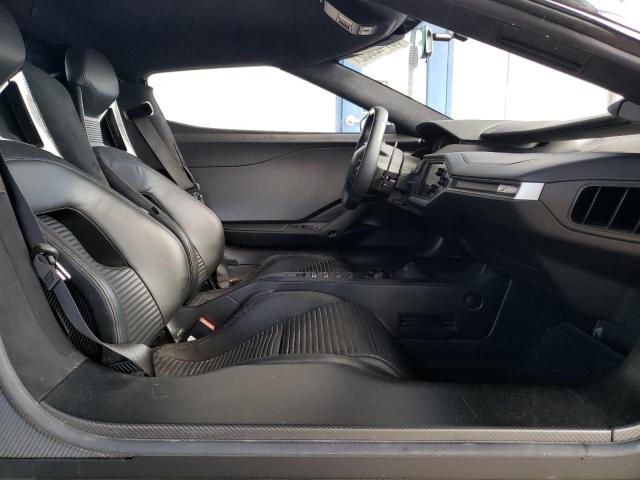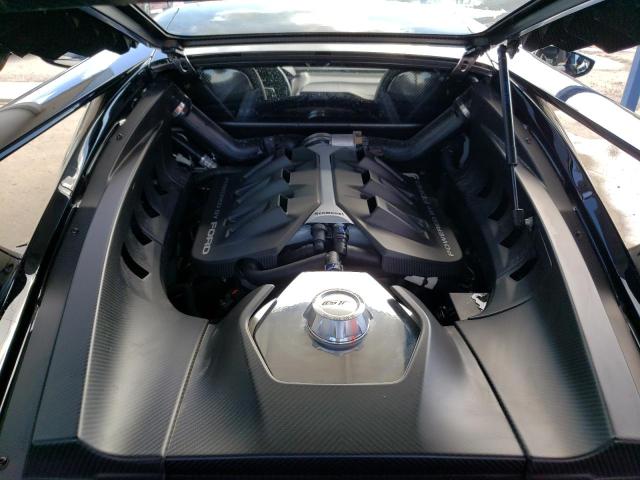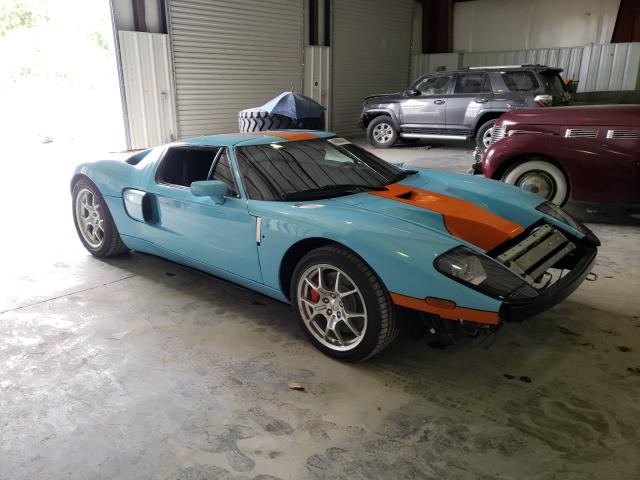2020 FORD GT | 2FAGP9CW4LH100185
 ❯
❯Vehicle specifications
2
~$1,200,000
Engine: 3.5L twin-turbocharged V6
Torque: 745 Nm
0–100 km/h: ~3.0 s
The 2017–2022 Ford GT was engineered as a no-compromise supercar—one born from endurance racing rather than luxury showrooms. Powered by a 3.5-liter twin-turbocharged EcoBoost V6 derived from Ford's IMSA Daytona Prototype, the GT delivered up to 660 horsepower (or 700+ in track-only Mk II form) and 745 Nm of torque. With a carbon-fiber monocoque chassis, active aerodynamics, and race-bred suspension, it could launch from 0 to 100 km/h in just 3.0 seconds and reach a top speed of 347 km/h (216 mph).
The car’s chassis was a masterpiece of motorsport technology: a pushrod suspension with adaptive ride height, hydraulic dampers, and rear-wheel drive—all managed via a suite of drive modes tuned for road, track, and weather conditions. The GT’s active rear spoiler and aero flaps adjusted in real-time to optimize downforce or reduce drag, depending on driver input and speed. Lateral grip exceeded 1.0 g, making the GT a formidable machine on any circuit, rivaling Ferrari and McLaren not only in lap times, but in driver feedback and cornering balance.
The GT’s essence was more about function than flair. With minimal insulation, a narrow cockpit, and stiff suspension, it wasn’t built for comfort—it was built to dominate. While other supercars aimed for luxury, the Ford GT chased lap records and Le Mans glory. Every design choice—from the flying buttresses to the teardrop cabin—served aerodynamic purpose, resulting in a supercar with truly race-first DNA, wrapped in a street-legal package.
Final Bid Ford GT (2020)
$99,000
$302,500
$506,000
Body Styles
The Ford GT was produced solely as a two-door, mid-engine coupe with a carbon-fiber monocoque and integrated roll structure. Its body design featured dramatic dihedral doors, a long rear deck flanked by floating buttresses for airflow management, and a pointed nose with deep side channels. Every contour was shaped by CFD and wind-tunnel testing, resulting in a surface that generated downforce even at moderate speeds. The narrow cabin and deeply recessed roof were inspired by LMP1 prototypes, and the rear featured twin central exhausts and active aero elements. In profile, the GT appeared simultaneously futuristic and purpose-built—pure aerodynamics in motion.
Model Name Meaning (Manufacturer)
The “GT” stands for “Gran Turismo,” but in Ford’s context, it’s shorthand for heritage, victory, and dominance at Le Mans. The name directly references the original Ford GT40 that famously beat Ferrari at the 24 Hours of Le Mans in 1966–1969. This 2017 revival was timed to commemorate the 50th anniversary of that first victory, and its return to Le Mans in 2016 delivered an immediate class win.
Model Name Meaning (Languages)
“GT” is a globally recognized automotive term, derived from the Italian Gran Turismo, meaning “grand touring.” In the Ford GT’s case, the name transcends language as a motorsport icon. The simplicity and authority of the name evoke performance, speed, and endurance racing history, making “GT” not just a designation—but a symbol of American engineering defiance and legacy.
Body & Interior Colors and Rims
The Ford GT was available in a curated selection of striking colors, including Liquid Blue, Shadow Black, Triple Yellow, Frozen White, Liquid Red, and Velocity Blue. Heritage Editions offered livery-inspired paint schemes like the 1966 Le Mans black-and-silver No. 2 car, the 1969 red No. 1 winner, and even Gulf Racing light blue and orange tribute editions. Each finish was a multi-layer metallic or pearlescent blend, often paired with painted racing stripes and exposed carbon packages.
Inside, the cockpit was minimalist and functional. Fixed carbon-fiber seats were mounted directly to the monocoque, with adjustable pedal boxes and steering columns to fit the driver. Upholstery options included Alcantara, leather, or carbon-weave surfaces, depending on trim. The dashboard featured digital instrumentation, a compact steering wheel with integrated controls, and exposed structural elements. Color schemes varied between standard, Competition, and Heritage editions, with contrast stitching, numbered plaques, and track-themed accents.
Wheels came in 20-inch forged aluminum or carbon fiber, with finishes including gloss black, matte graphite, or satin clear-coated carbon. Center-lock hubs were optional on track-focused editions. Michelin Pilot Sport Cup 2 tires wrapped the wheels, tuned specifically for the GT’s aerodynamics and chassis balance.
Top Expensive Options
- Heritage Edition Package with Historic Livery: $100,000
- Exposed Gloss Carbon Fiber Wheels: $25,000
- Lightweight Interior Package with Alcantara and Carbon Trim: $18,500
- Akrapovič Titanium Exhaust System (Track Edition): $11,000
- Carbon Fiber Exterior Upgrade Pack (Splitter, Diffuser, Sills): $10,500
- Custom Racing Stripe and Painted Calipers: $9,200
- Paint-to-Sample Color via Multimatic Program: $8,800
- Lightweight Lithium Battery Kit: $5,000
- Smart Data Logger System (Track Telemetry): $3,500
- Personalized Door Sill Plaques and Interior Badging: $2,700
vs Competitors
The Ford GT competed in the rarefied world of supercars dominated by Ferrari, McLaren, and Lamborghini. Compared to the Ferrari 488 Pista or F8 Tributo, the GT was more race-focused and offered less luxury, but more aerodynamic efficiency and motorsport credibility. Against the McLaren 720S, the Ford had less power but a tighter chassis and higher-speed stability. It was significantly more exclusive, with a capped production run and invitation-only purchase process. Unlike the Lamborghini Huracán or Aventador, the GT emphasized precision over drama—eschewing V12 sound for wind-tunnel precision and cornering perfection. It was, in essence, a prototype disguised as a road car, built not to please every driver—but to reward the one who could keep up.
Fun Fact
The Ford GT was not sold in traditional dealerships. Instead, prospective buyers had to apply through an online portal, submitting personal and professional profiles, social media activity, and proof of brand loyalty. The car was hand-built by Multimatic in Markham, Ontario, and production was strictly limited to 1,350 units worldwide. As a result, the GT became not just a halo car, but a curated cultural icon—owned by racers, collectors, and brand ambassadors chosen by Ford itself.

















